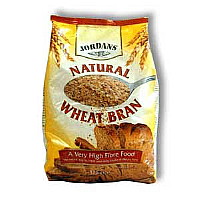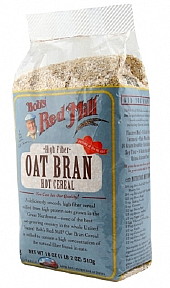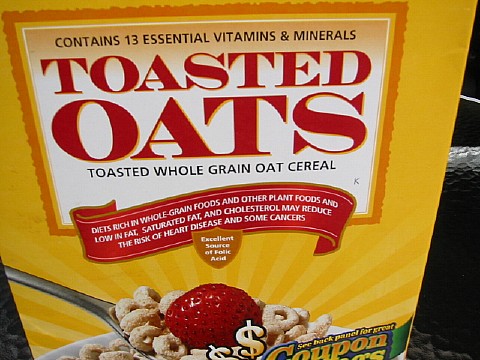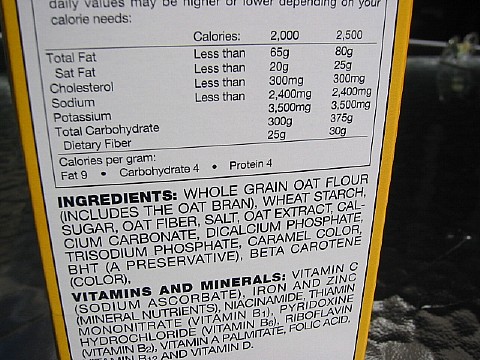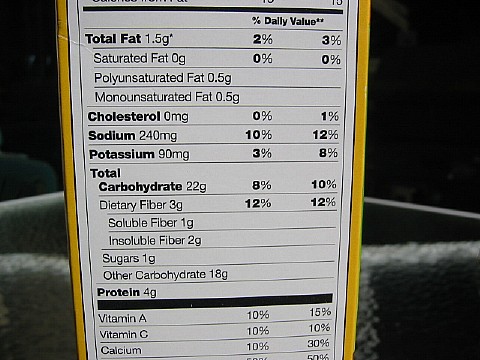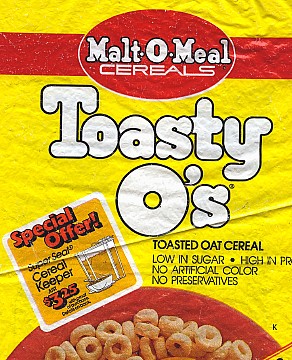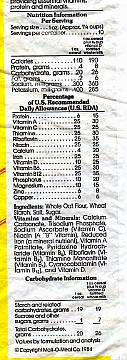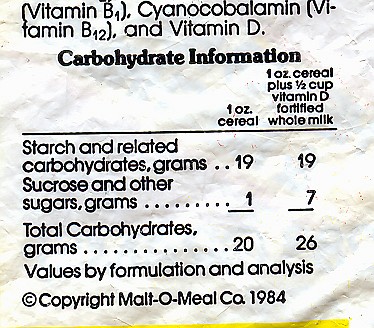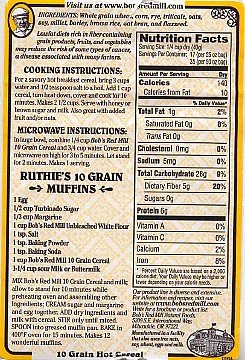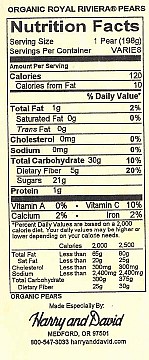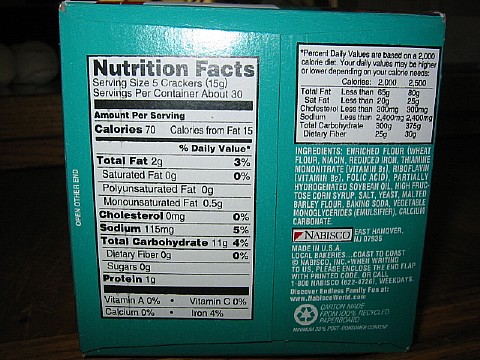In your Lecture Outline under 3(a) near the bottom of page 46 it asks what the purpose in a plant is of cellulose. That purpose in a plant is structure. Since all plants need structure, cellulose (the main kind of insoluble fiber) can be found in ALL whole plant foods. Something like white flour is made by many siftings that separate the fiber-rich bran and germ. White flour is the low-fiber endosperm of the plant. In your Lecture Outline under 3(b) at the bottom of page 46 it says that pectin & gums are examples of soluble fibers. Another example to write there is inulin (Notice there's no"s" in that word. It is not the same thing as what diabetics lack.) More later about inulin. 3(b) also asks if anything happens to pectin & gums so something can get into our blood. The answer is "no". Pectin and gums are fibers and are therefore not broken apart by human enzymes. The chart on page 65 of your packet lists why it's good for us to eat foods with cellulose and you can write that in your Lecture Outline under 3(a) on page 46 when it asks why it's good for us to eat foods with insoluble fiber. On page 65 it's called "HEALTH BENEFITS". Take a look again at page 65 in your packet and write these HEALTH BENEFITS of soluble fiber on your lecture outline on the bottom of page 46 of your packet under 3(b) where it asks why it's good for us to eat foods with soluble fiber.
At the very bottom of page 46, your lecture outline asks, "What are the most nutritious foods to eat to get fiber?". In my opinion, the answer is
a variety of WHOLE foods, such as whole grains, dried beans and peas,
nuts, fruits, and vegetables.
Another important reason to enjoy foods with soluble fiber pertains to the role of some of them as having probiotics, something there has been a growing interest in. Controversy 2 of Nutrition Concepts and
Controversies defines probiotics as "consumable
products containing live
microorganisms in sufficient numbers to alter the bacterial colonies of
the body in ways believed to benefit health". The vast majority
of probiotics are
bacteria and many of the health benefits are due to their effects on
intestinal health.
Prebiotics have become popular food additives. The most
commonly
used prebiotic additives are inulin and
oligofructose, which can both be classified as fibers.A prebiotic (as opposed to a probiotic) is a substance that may not be digestible by the host, such as soluble fiber, but serves as food for probiotic bacteria and thus promotes their growth. Wheat, chicory, bananas, onions, leeks, Jerusalem artichokes, asparagus, and garlic contain prebiotics that can be extracted from them. At the top of page 47 in your packet it says a possible third type of fiber is emerging and that is resistant starch, which resists digestion, like fiber. It is discussed on page 114 in the 10th edition and page 119 in the 11th edition. It is thought to deliver some of the benefits of insoluble fiber and some of the benefits of soluble fiber. |
